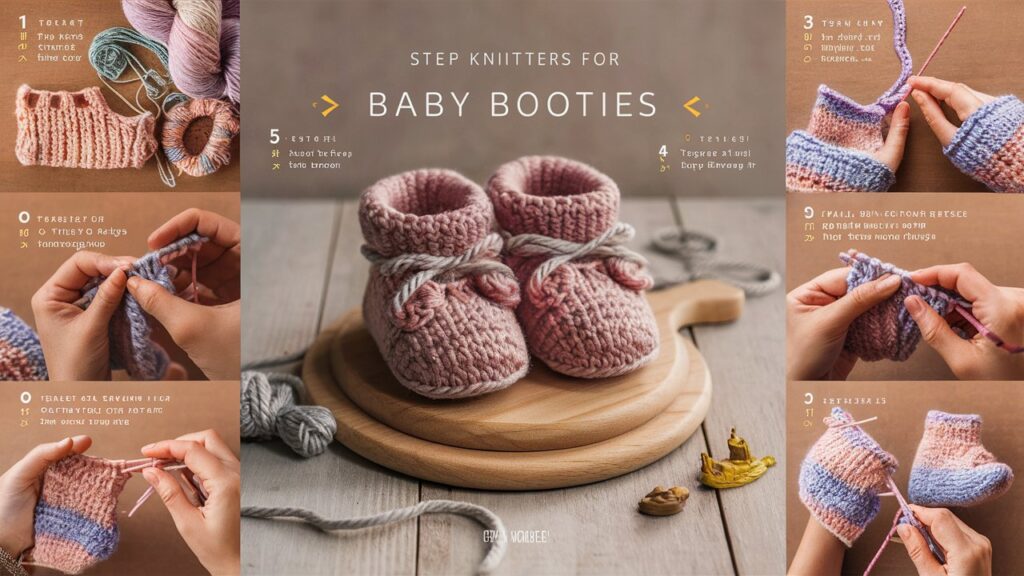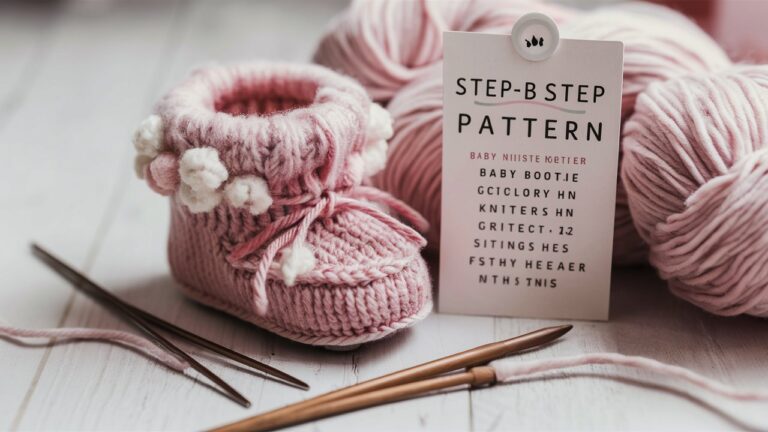Introduction
Knitting baby booties is a heartfelt way to welcome a new little one into the world. These tiny, cozy creations are not only practical but also cherished keepsakes. Whether you’re a seasoned knitter or picking up needles for the first time, this guide will walk you through creating soft, snug booties using a simple knit pattern. In this article, you’ll learn everything from selecting materials to mastering basic stitches, customizing designs, and caring for your finished pieces. Let’s dive into the world of knitting baby booties and craft something truly special!
1. Choosing the Right Materials for Knitting Baby Booties
The foundation of any successful knitting project lies in selecting the right materials. For baby booties, soft, hypoallergenic yarn is essential to protect delicate skin. Opt for machine-washable acrylic or organic cotton blends, which combine durability and gentleness. Pair your yarn with size 3.5–4.5mm knitting needles for a tight yet flexible stitch. Don’t forget stitch markers, a darning needle for weaving in ends, and small buttons or ribbons for embellishments. Always prioritize safety: avoid loose embellishments that could pose a choking hazard.
2. Understanding Basic Knitting Techniques for Baby Booties
Before casting on, familiarize yourself with the knit stitch, purl stitch, and increasing/decreasing stitches—the building blocks of most patterns. Baby booties often use ribbed cuffs (alternating knit and purl stitches) for stretchiness and stockinette stitch (knit one row, purl the next) for a smooth finish. If you’re new to knitting, practice these techniques on a swatch first. For booties, circular or double-pointed needles may be recommended for seamless shaping, though straight needles work for flat patterns sewn together later.
3. Step-by-Step Baby Booties Knit Pattern
Cuff and Leg: Begin by casting on 28–32 stitches (adjust based on baby’s size). Work a 1×1 rib stitch for 5–8 rows to create a stretchy cuff. Switch to stockinette stitch for the leg, knitting 10–12 rows until the piece measures 2–3 inches.
Sole and Foot: Shape the sole by increasing stitches at the toe and heel. For a rounded toe, use Knit Front and Back (KFB) increases every few stitches. Knit the foot in stockinette until the sole length matches the baby’s foot (typically 3–4 inches).
Shaping the Toe: Decrease stitches gradually using Knit Two Together (K2TOG) to create a rounded toe. Bind off remaining stitches and seam the heel using the darning needle.

4. Customizing Your Baby Booties Knit Pattern
Personalize your booties with stripes, textured stitches, or pastel colorwork. Add embroidered initials or tiny pom-poms for whimsy. For a gender-neutral option, try earthy tones or geometric patterns. Experiment with lace stitches for a dainty look or cable knits for a vintage vibe. Always ensure decorations are securely fastened.
5. Tips for Sizing and Adjusting the Pattern
Baby booties typically fit newborns (0–3 months) but can be resized by adjusting your cast-on stitches. For larger sizes, add 4–6 stitches and extend the leg and sole length proportionally. Use a knitting gauge to check stitch consistency. If the booties feel too tight, switch to larger needles; if too loose, opt for smaller ones.
6. Caring for Hand-Knit Baby Booties
Hand-wash booties in lukewarm water with mild detergent to preserve their shape. Lay flat to dry to avoid stretching. Store in a breathable cotton bag to prevent moth damage. For frequent use, knit multiple pairs in coordinating colors!
Conclusion
Knitting baby booties is a rewarding project that combines creativity with practicality. With this pattern and guidance, you’ll craft adorable, heirloom-quality booties perfect for gifting or treasuring. Remember, every stitch carries love—so take your time, enjoy the process, and watch those tiny toes stay warm and stylish!
Frequently Asked Questions (FAQs)
Q1: What yarn is safest for newborn baby booties?
A: Choose hypoallergenic, machine-washable yarns like organic cotton or super-soft acrylic. Avoid wool for newborns, as it can irritate sensitive skin.
Q2: Can I adjust this pattern for preemies or toddlers?
A: Absolutely! Reduce cast-on stitches by 4–6 for preemies. For toddlers, add stitches and knit a longer sole (up to 5 inches).
Q3: How long does it take to knit baby booties?
A: Beginners might finish a pair in 4–6 hours. Experienced knitters can complete them in 2–3 hours.
Q4: How do I prevent holes near the heel or toe?
A: Ensure stitches are snug when increasing/decreasing. Use a smaller needle size for the heel/toe if needed.
Q5: Can I use this pattern for crochet?
A: This guide is for knitting, but similar principles apply. Look for a crochet-specific pattern for stitch conversions.
Now grab your needles, pick a cozy yarn, and let those baby booties take shape! 🧶👣
